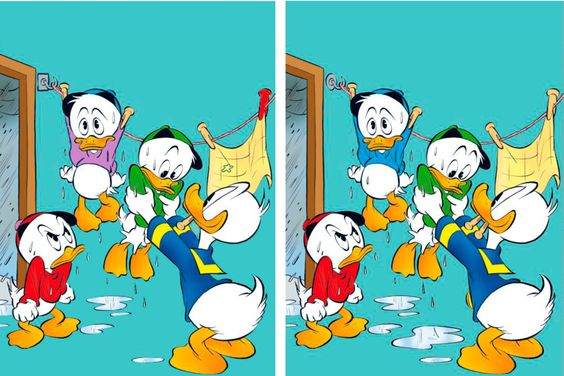Visual game for children and adults. Task – find 10 differences. Optical illusions encompass visual phenomena that deceive both our eyes and brains, leading us to perceive things differently than they truly are.

Exploiting the intricacies of our visual system’s information processing, these illusions result in misinterpretations or distortions of images. Various factors contribute to the occurrence of optical illusions, including the brain’s efforts to make sense of ambiguous or conflicting visual cues.
Several common types of optical illusions include:

1. **Geometric Illusions:** These involve shapes and patterns that, despite being accurately drawn, appear distorted or skewed.
2. **Ambiguous Figures:** Images that allow for multiple interpretations, exemplified by Rubin’s Vase, where the same image can be perceived either as a vase or two faces.

3. **Motion Illusions:** Visual effects that induce a sense of movement or motion, as seen in the spinning dancer illusion, where none actually exists.
4. **Color Illusions:** Manipulation of colors and contrasts that can make objects seem to change color or create a false sense of depth.
Optical illusions find applications in art, entertainment, and scientific studies aimed at comprehending how our visual system processes information. They underscore the intricate relationship between our eyes and brain, revealing how easily our perceptions can be manipulated under specific conditions.

Share your triumph in the comments and indicate the time it took you to find the answer.
















